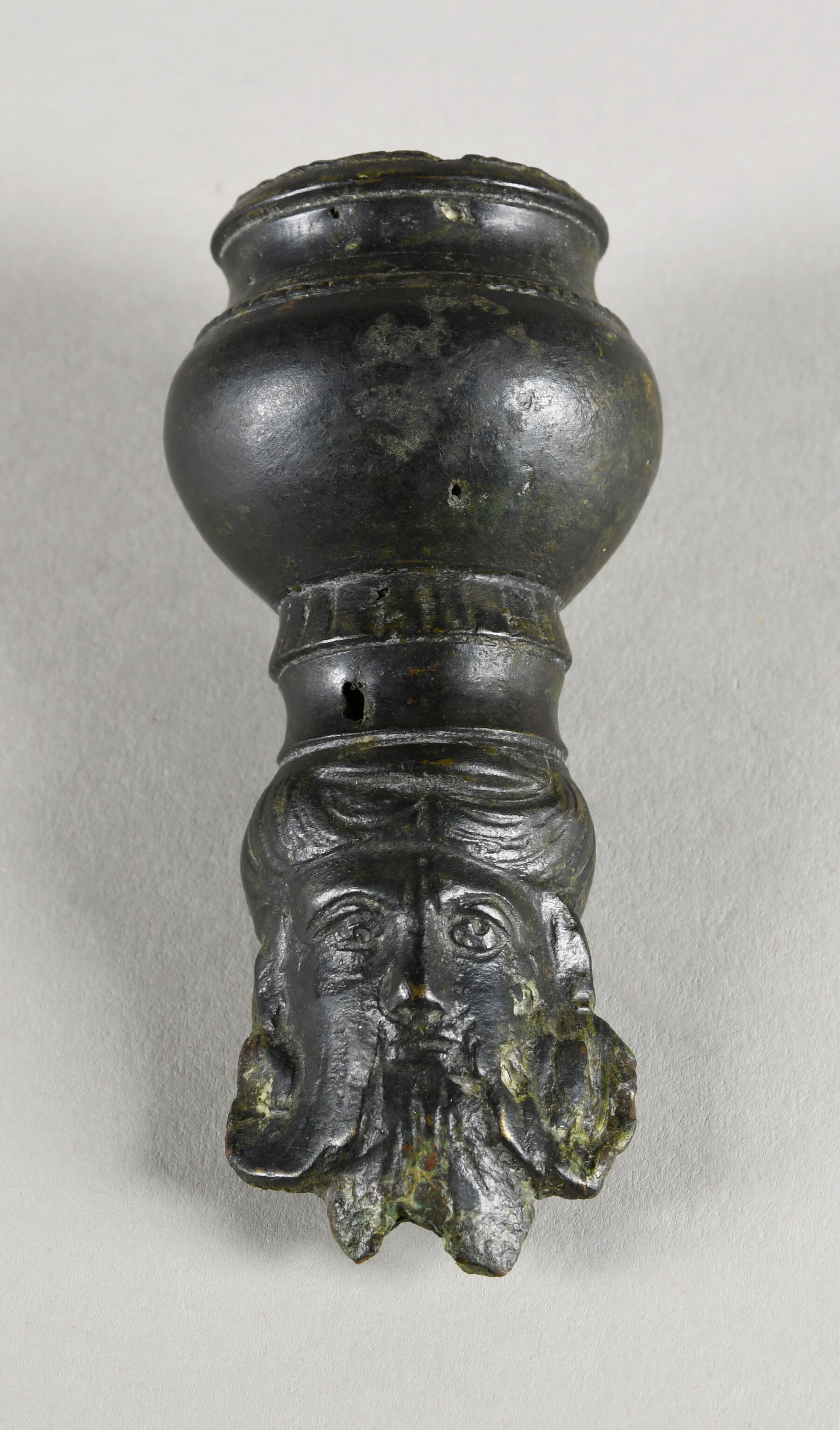Beginning in the 1st millennium, elite individuals made offerings of metal statuettes to the gods. Particularly popular were statues of the universal deities Osiris, Isis, and Harpocrates, whose cults were celebrated throughout Egypt.1 Most deities were worshiped in their specific cult centers. Ptah, Sekhmet, and Nefertem were honored in Memphis. Amun, Mut, and Khonsu were revered in Thebes.
Bronze statuettes were often inscribed with the names of the deity and the donor. Once offered by the owner, the figurines were displayed in divine temples and shrines.2 The statuettes gave the donors access to the gods by acting as participants in cult practices so that their prayers and wishes would be answered.3 Dedication formulas on Saite bronze figurines of Osiris mention temple personnel entrusted to give figurines to the local god so that the donor would receive divine protection.4 After some time, the figures were buried in caches and sacred animal catacombs.
Many figurines have tangs for insertion into bases. Other statuettes have a ring or loop attached at the back of the head. These figurines were likely fastened to sacred boats. A rope or rod was passed through the ring to support the statuette and safeguard it against accidents.
MH
The beard and hairstyle of this bronze head identify it as a depiction of Zeus. The vessel worn on the head is a kalathos, a container used to store produce that was often associated with Serapis. Syncretic imagery combining attributes of two or more deities became widespread in Egypt during the Ptolemaic period. The hollow reverse of this head indicates that it probably served as a decorative attachment for a tripod vessel or an article of furniture.5
TH
-
Hill, Marsha and Deborah Schorsch, eds. 2007. Gifts for the Gods: Images from Egyptian Temples. New Haven and London: Yale University Press.. ↩︎
-
Eg., caches discovered inside and outside the central temple enclosure in the Sacred Animal Necropolis at Saqqara (Davies, Sue. 2007. “Bronzes from the Sacred Animal Necropolis at North Saqqara.” In Gifts for the Gods: Images from Egyptian Temples, edited by Marsha Hall with Deborah Schorsch, 174–188. New Haven and London: Yale University Press.). ↩︎
-
Spencer, Neal. 2006. A Naos of Nekhthorheb from Bubastis: Religious Iconography and Temple Building in the 30th Dynasty. London: British Museum.; Davies, Sue. 2007. “Bronzes from the Sacred Animal Necropolis at North Saqqara.” In Gifts for the Gods: Images from Egyptian Temples, edited by Marsha Hall with Deborah Schorsch, 174–188. New Haven and London: Yale University Press.. ↩︎
-
Meulenaere, Herman de. 1990. “Bronzes égyptiens de donation.” Bulletin des Musées Royaux d’Art et d’Histoire 61: 63–81.. ↩︎
-
cf. BM 1774,0603.1.b; Louvre BR 2583 ↩︎
Bibliography
- Davies 2007
- Davies, Sue. 2007. “Bronzes from the Sacred Animal Necropolis at North Saqqara.” In Gifts for the Gods: Images from Egyptian Temples, edited by Marsha Hall with Deborah Schorsch, 174–188. New Haven and London: Yale University Press.
- Hill and Schorsch 2007
- Hill, Marsha and Deborah Schorsch, eds. 2007. Gifts for the Gods: Images from Egyptian Temples. New Haven and London: Yale University Press.
- Meulenaere 1990
- Meulenaere, Herman de. 1990. “Bronzes égyptiens de donation.” Bulletin des Musées Royaux d’Art et d’Histoire 61: 63–81.
- Spencer 2006
- Spencer, Neal. 2006. A Naos of Nekhthorheb from Bubastis: Religious Iconography and Temple Building in the 30th Dynasty. London: British Museum.
